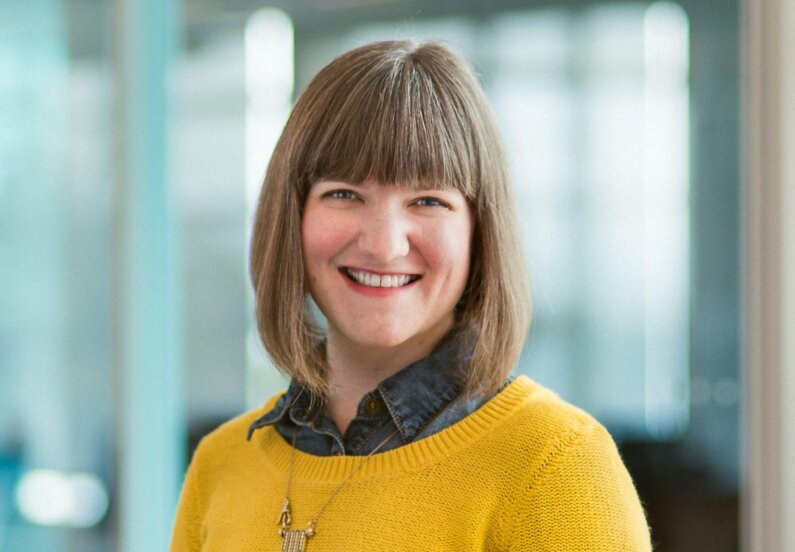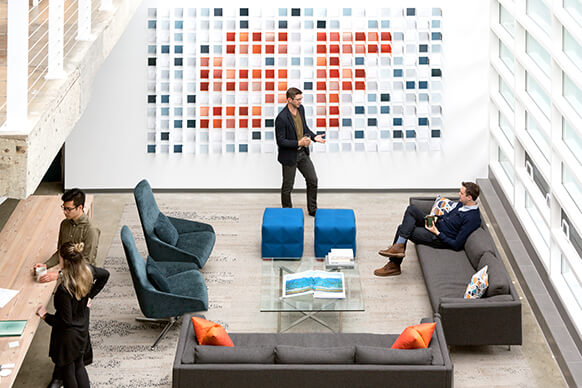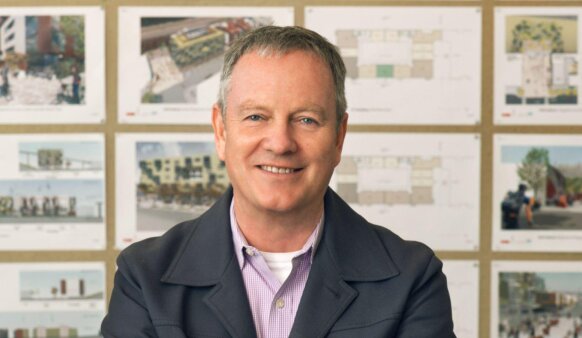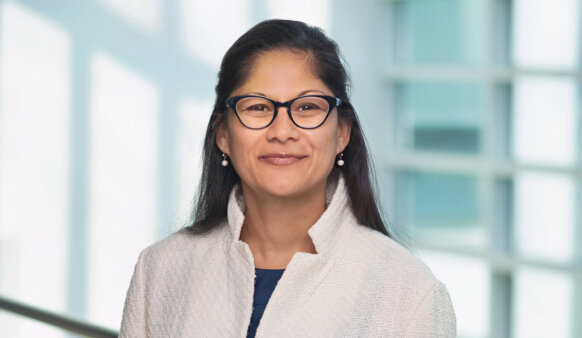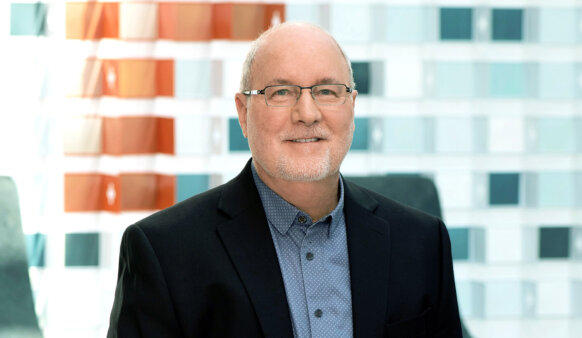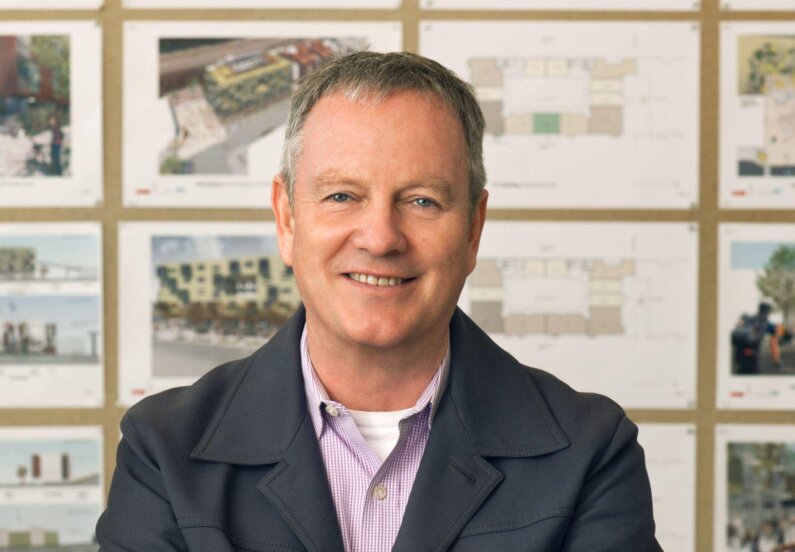
I am inspired by how much the world of architecture has adopted sustainable thinking during my 32 years in practice, and how sustainability is now part of the baseline. I am constantly inspired by the work that many of my colleagues have done to prove what is possible. What motivates me is to be part of exploring what’s next and to continue to deliver work that pushes the limits, educates our clients and contributes to the discourse about a more sustainable future.
The LEED Platinum, Net-Zero Energy Childcare Center we designed for a confidential client was a huge accomplishment that I am very proud of. The structure was built with mass timber, and products were selected and screened according to Perkins&Will’s Precautionary List, to prioritize materials that reduce exposure to harmful substances.
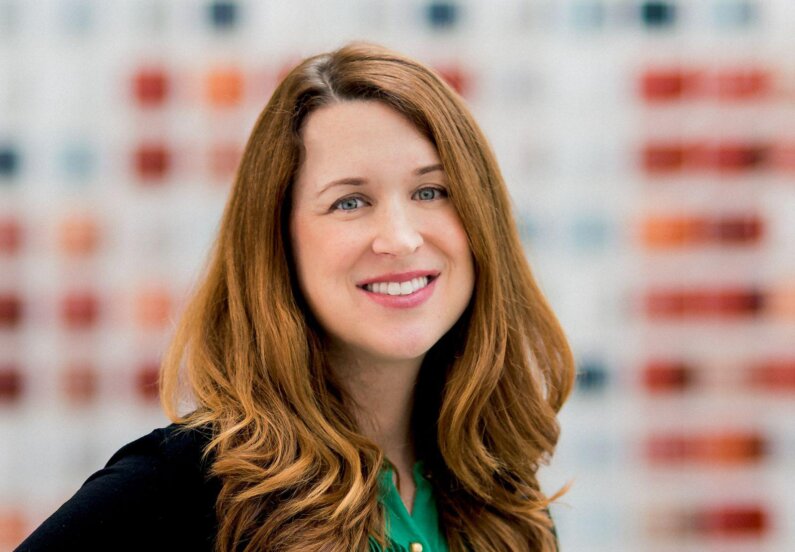
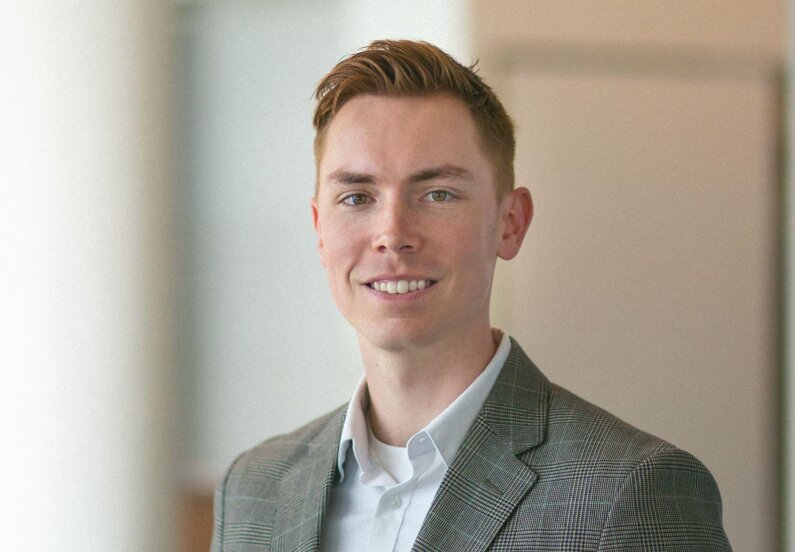
If we do that, we’ve failed. Sustainability is the prerequisite, not the goal. The goal is to create wonderful places—places that take the normal and make it extraordinary. The best architecture creates magic from environmental/human necessity.
Buildings last a long time, and sometimes longer than their design life expectancy and use; they will also serve many generations. Hence, the design needs to be thoughtful and responsible to the environment as well as their occupants.

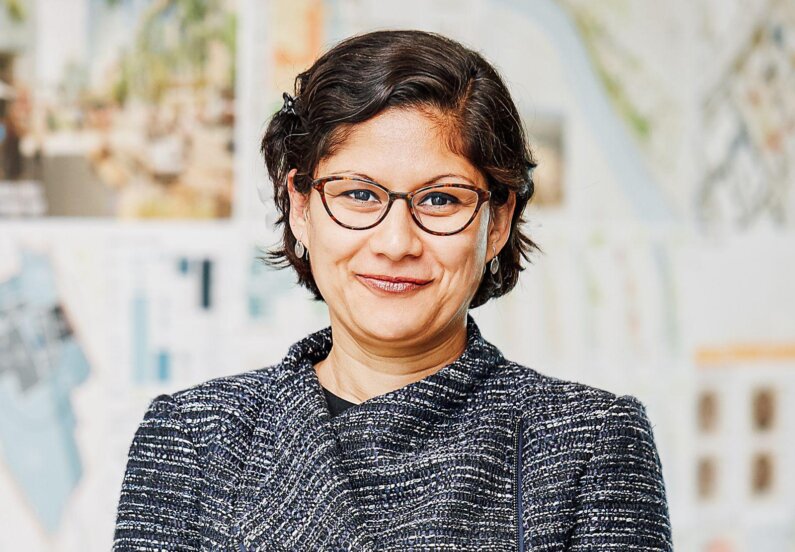
Learning from the regenerative cycle of natural systems, imbibing the principles of systemic and living design to achieve a circular economy—are the basics of my design philosophy. My everyday objective is to be resource efficient and zero waste in everything I do.
I think this probably becomes even more true in the age of sustainable architecture. A lot of passive design strategies require specific relationships between parts of the building—size of windows vs. depth of rooms affect passive lighting, height and shapes of spaces can be leveraged for effective ventilation—the list is long! Overall, the “function” of sustainability requires certain forms to work correctly, and therefore can have a significant impact on the resulting form of a building.
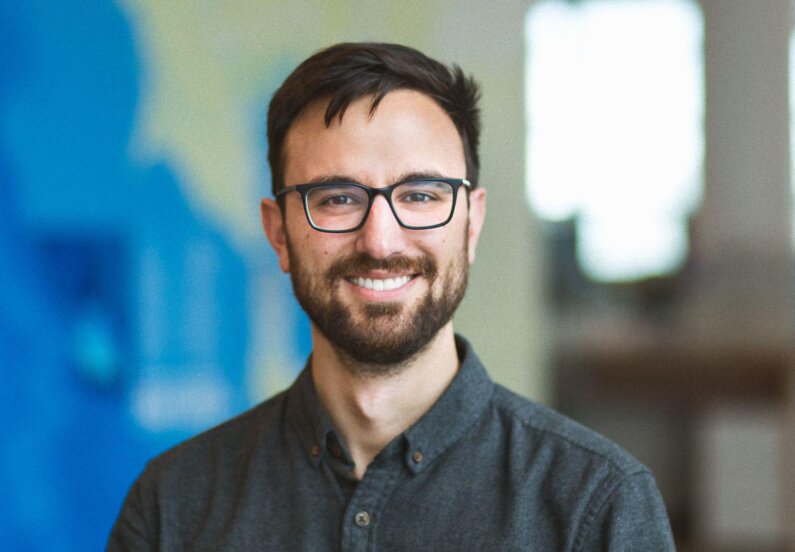
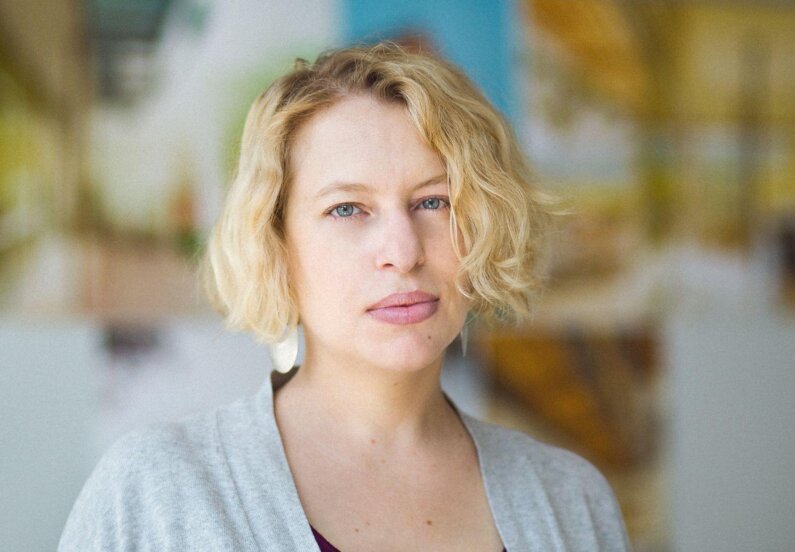
Sustainability is simply another layer of design challenge. As part of emphasizing the importance of sustainability, we can choose whether or not to create an aesthetic that allows users to see and experience the importance of sustainability. As designers, we can also create an aesthetic or design that folds aspects of sustainability into the design without bringing them to the forefront.
Designers are inherently more attuned to aesthetics and the sense of responsibility we have to community and place. We work to create beautiful places with the hope that communities will fall in love with these places and take responsibility for keeping them beautiful. We can do better than settling for just being less harmful to the earth in our designs and practices, in how we live. Imagine—an idea both ancient and radical—that humans love the world so much our planet is improved by our presence here. I believe that all of us at Perkins&Will can lead the way.
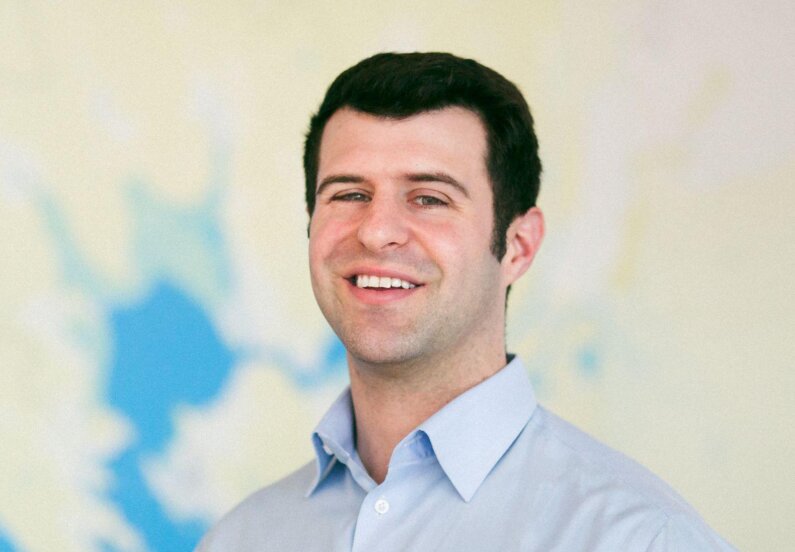
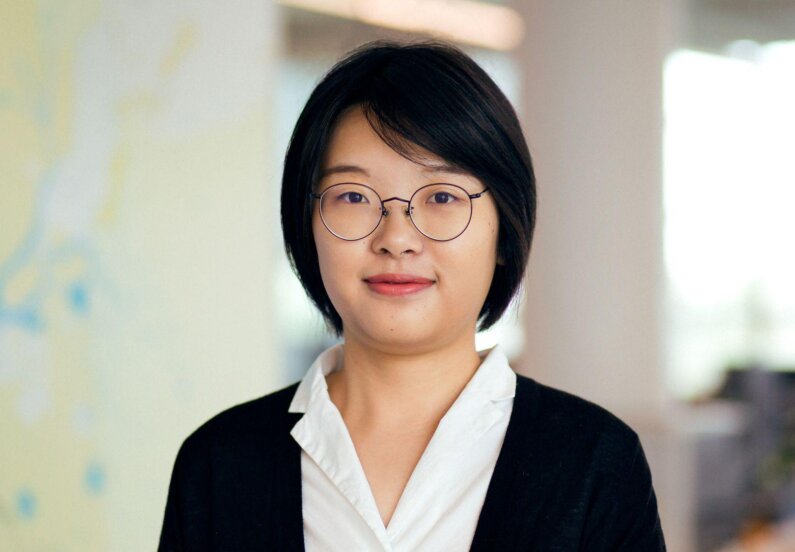
I do think our design most of time is affected by the site, its building functions, environmental needs, design aesthetics. I believe we should mostly keep in mind the design framework of public space, since it’s a significant part of general environment, it’s where shared value takes place, collectively add huge value to the experience and potential of urban area. I think the most fascinating part of environment is the public space we all live in.
I am most proud of the deeply sustainable Connie & Kevin Chou Hall at the UC Berkeley, Haas School of Business. It is a feel-good building that is clearly organized with spaces that serve the academic mission of the school and it is filled with daylight and fresh air. Not to mention, it has achieved LEED Platinum, WELL Silver, and TRUE Zero Waste Platinum Certifications—the “green triple crown!”
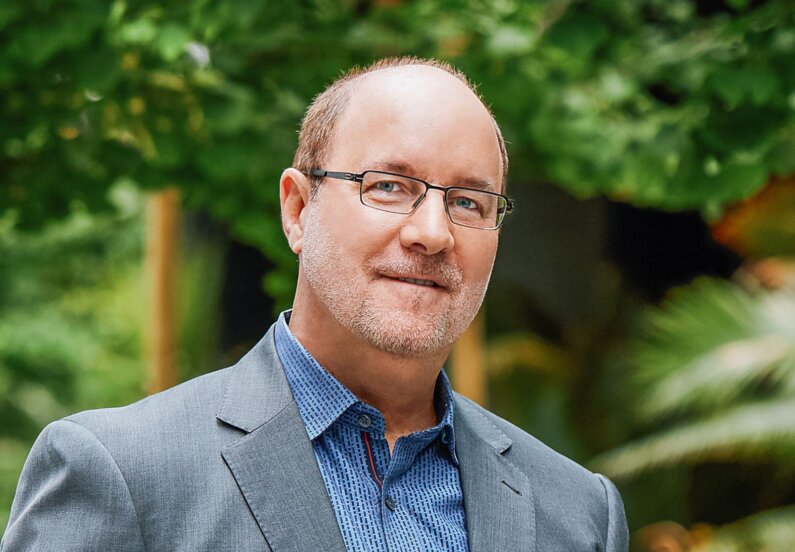
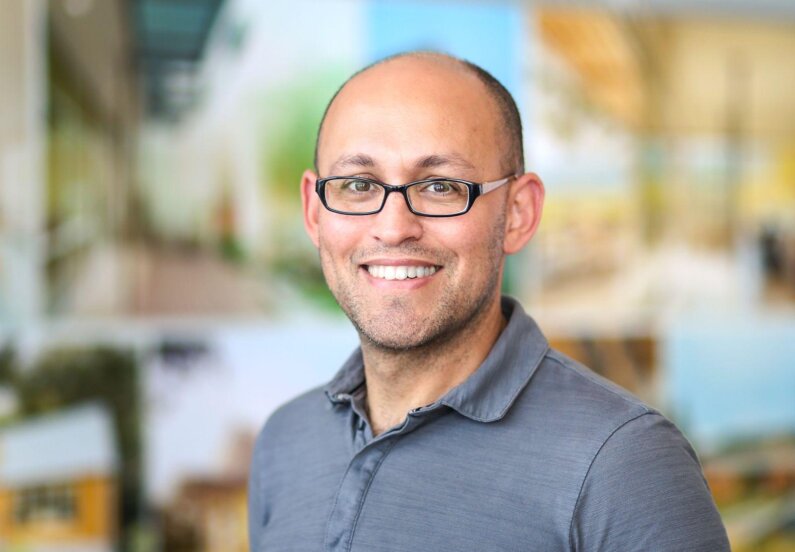
Sustainable design doesn’t always mean using fancy expensive equipment. It’s the way you place a building on a site—one good thing here and one good thing there eventually add up to a better world.
Personal health. Healthy world = healthy body. The best parts of the planet will not survive if we don’t do better.
